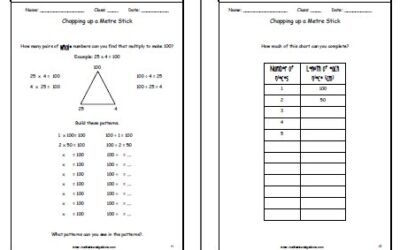Some of the most successful maths teaching approaches in the world place a strong emphasis on building children’s understanding through a carefully structured progression from concrete through pictorial to abstract.
This can easily be achieved by:
engaging young children in exploring mathematical ideas using counters, cubes, blank and numbered counting sticks, paper folding, etc
introducing children to a ‘vocabulary of diagrams’ and helping them to use these consistently to explore and then to explain the concepts they have been learning (eg number lines, number bond diagrams, bar models, arrays, etc)
encouraging children to record diagrammatic representations and numerical calculations together when explain their solutions to a problem
Much of the guidance and many of the activities on the Maths Without Limits website show how to use both practical materials and diagrams in different contexts. Here are some examples.
Success with Fractions – Part 1
A clear step-by-step guide for parents and teachers on how to help children to learn about fractions. Packed with practical ideas. Part 1 covers the first four years of formal schooling.
Rectangle Diagram – Multiply Two Numbers
This is one of a series of visual skill builders which are designed to give children a toolkit of diagrams, words and phrases to help them explain their mathematical understanding and solve...
Factor Rainbows
A factor rainbow is a beautiful idea that deserves to be part of every child’s Mathematical vocabulary. This mini exploration encourages them to explore freely and see how many they can find....
What can you do with 200 metre sticks?
First published in the SMC Primary Journal Issue 1 (2017) Two years ago we bought 100 metre sticks. Last year we bought 100 more! Used together with base ten materials, metre sticks...
Metrestick fractions-decimals-percentages
(first published in the SMC Journal Issue 48) In my last article, I shared what a fantastic resource metre sticks are for teaching early addition and subtraction skills. In this article I will...
Chopping up a Metre Stick
Well, not ACTUALLY cutting it up – but imagine… Suppose you wanted to make 4 pieces or 5 pieces. Where would you chop? How about 3 pieces? Get totally immersed in how division, fractions and...





